How to cat-proof your Christmas tree, according to experts
For a cat-proof Christmas tree follow these must-know tips and tricks from vets and leading pet experts
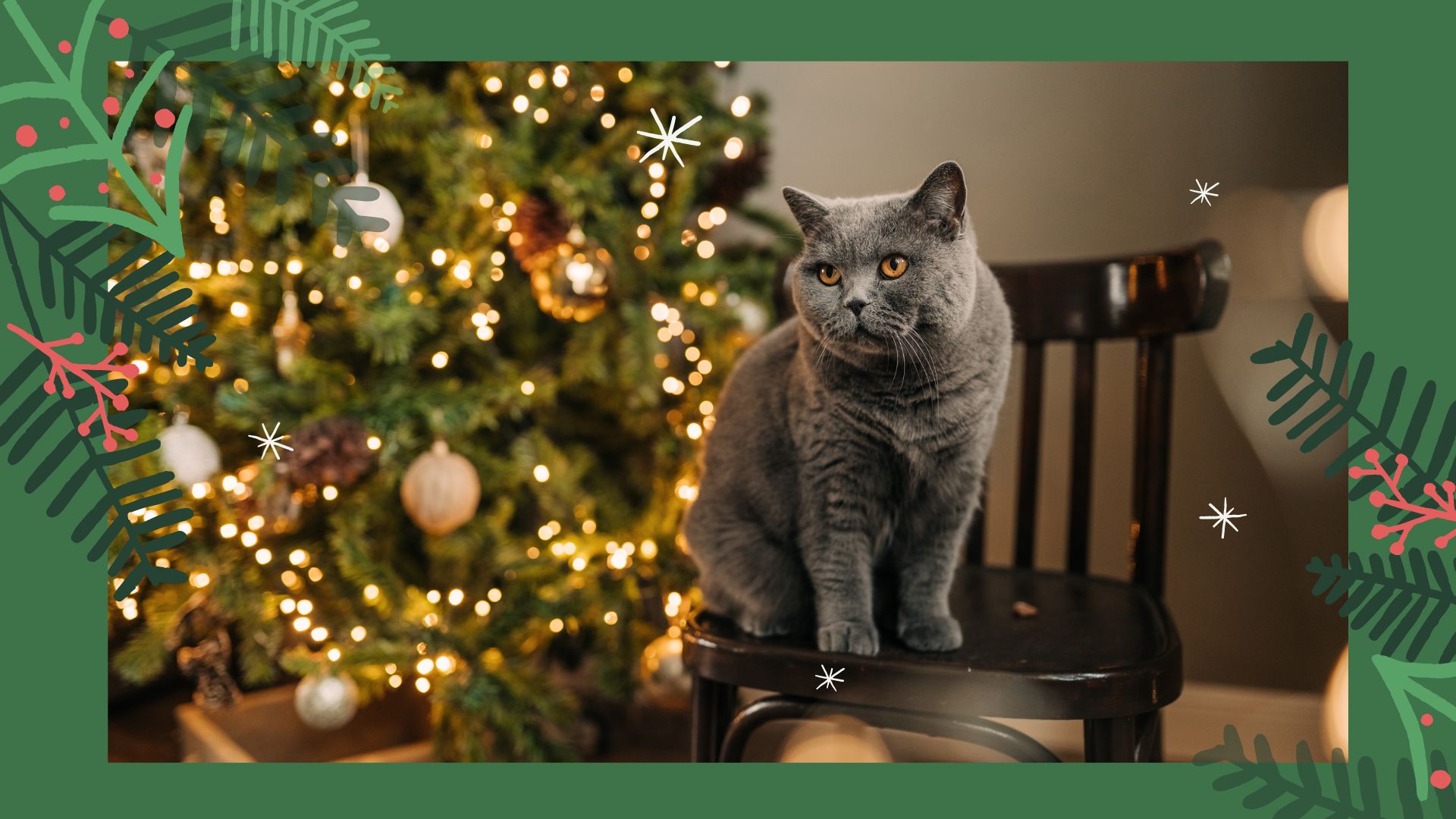
Tamara Kelly
A cat-proof Christmas tree is a must-have for any cat owner, for their sake and your own because all it takes is one curious moggy to spoil your gorgeous festive creation and end up putting themselves in harm's way – whether they break baubles or ingest needles.
And it's hardly your cat's fault – after all, it's not every day that a tempting tree covered in the best Christmas lights and bouncing baubles appears. "Cats are curious by nature and Christmas trees can be very stimulating and exciting to them," says Dr. Jonathan Roberts (BVSC), a veterinarian at Excited Cats. "Not only are the decorations great toys but the presence and scent of a new Christmas tree will draw their curiosity in. Cats also have the desire to climb to the tallest vantage point in your house – and the new tree might just be high enough!"
But if you've perfectly styled your fir with the latest on-trend Christmas tree theme, you're going to want to protect it from mischievous paws, as well as protect your cat from any harm it could do. Below, we've gathered expert advice on how to keep your cat away from your tree, as well as identify the types of trees that are safest for our feline pals.
What are the best Christmas trees for cats?
If you're wondering, are Christmas trees safe for cats? It's worth noting that generally, the best artificial Christmas trees are safer if you have cats (and dogs) in the home, as they won't have any sharp needles that could hurt your cat, or be ingested by them. So an artificial option is generally considered to be the best cat-proof Christmas tree.
However, if you are set on a real tree, the best real Christmas trees for cats are Nordmann Fir or Norway Spruce – fir and spruce trees, in general, are largely harmless to cats. Just be sure to hoover up any dropped needles as soon as you spot them so as to minimize your cat's chance of inadvertently ingesting a spiky branch. And if you really want to be confident that you've picked the best possible tree for your beloved pet, a chosen few retailers actually sell a cat-proof Christmas tree.

For example, in the UK if you're buying a real Christmas tree online, you could opt for ChristmasTrees' Cat-Proof Christmas Tree, seen pictured below. What it might lack in branches, this UK-grown Nordmann Fir Christmas tree, which stands at either 7ft or 8ft tall, more than makes up for in the design. It's the ideal fuss-free approach to cat-proofing, with those upper branches difficult for even the canniest of felines to reach, and the lower branches removed to ensure minimal tampering.
And when it comes to Christmas tree decorating ideas for cat-proof trees, remember that they can also be decorated to look equally as lovely as regular trees, so there's no compromise there.
Sign up to our free daily email for the latest royal and entertainment news, interesting opinion, expert advice on styling and beauty trends, and no-nonsense guides to the health and wellness questions you want answered.
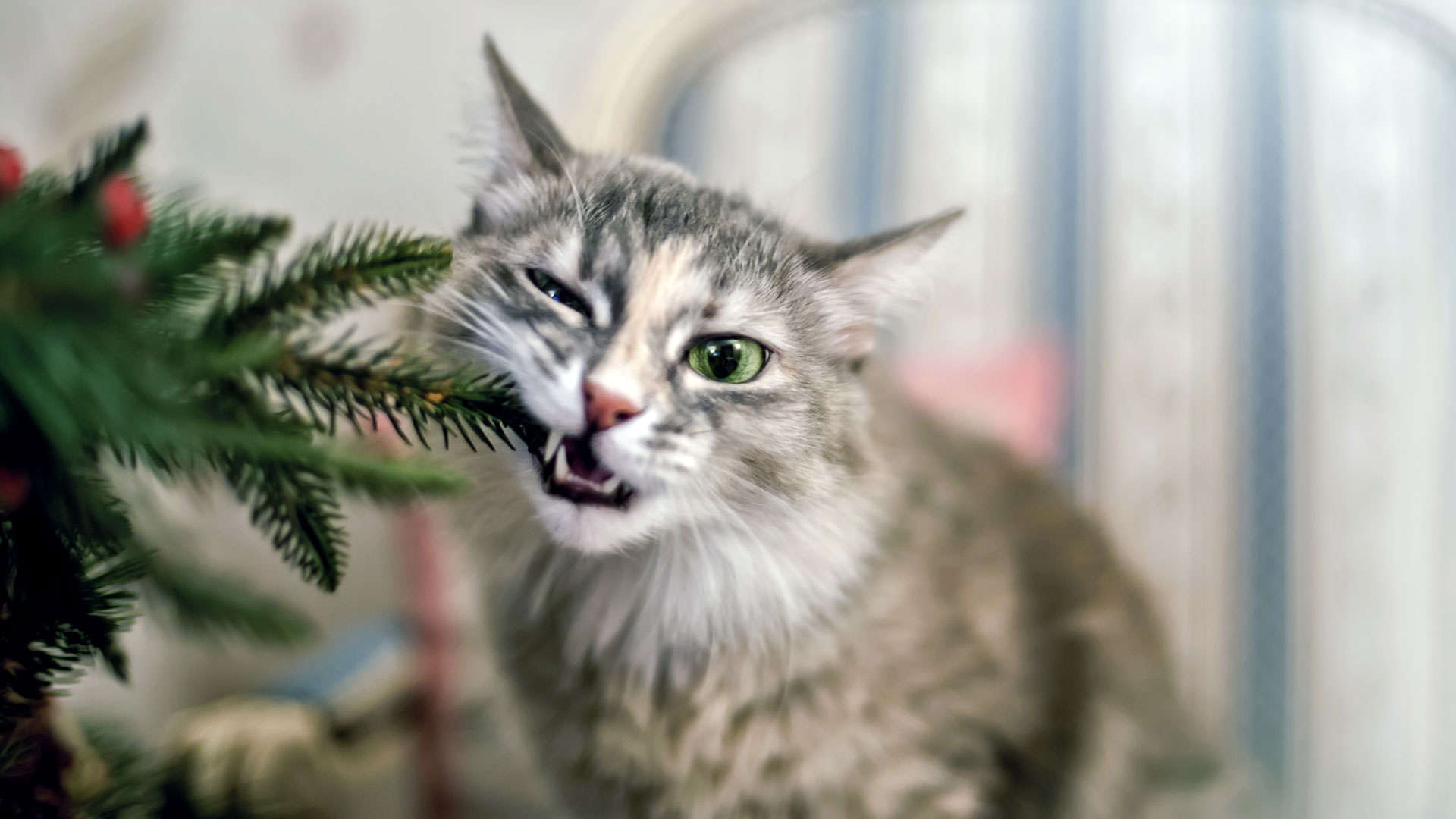
Are Christmas trees safe for cats?
If you have your heart firmly set on a real Christmas tree, it can also help to pick a variety that is safe for your feline best friend. Pine trees are not a wise choice, as they can be toxic to cats.
"If you have a real tree, be careful of your cat nibbling away at it because the oils produced by Christmas trees can be toxic for cats," explains Doron Wolffberg, Founder at All About Cats, "with fake trees, the leaves can also irritate cat paws, mouths, and intestinal tracts."
"Luckily the toxicity caused by pine sap and needles is relatively mild," adds Dr. Roberts. "But while cats usually don't go out of their way to ingest strange objects, the pine sap may stick to their fur and they could ingest it while grooming. Pine needles have a close resemblance to grass, and cats may be tempted to chew on them. This can cause mechanical injury, which can potentially cause ulceration to the mouth, esophagus, and possibly the stomach."
Whilst pine in small doses is typically harmless, it can be more dangerous when ingested in larger quantities.
Dr. Roberts warns that there are three key signs that your cat might have ingested pine:
- Vomiting
- Diarrhea
- Loss of appetite
If your cat is displaying any of these symptoms, it's time to act. "It's advisable to take your cat to the vet if you suspect they have ingested pine sap or needles," recommends Dr. Roberts. "The vet may consider making your cat vomit if not much time has elapsed. Additionally, they will require anti-nausea medication and possibly activated charcoal to absorb remaining toxins."
It's also worth noting that the water your real Christmas tree is standing in can potentially be harmful too. "Not only will it contain pine sap but stagnant water might harbor harmful bacteria," Dr. Roberts warns.
How to cat-proof your Christmas tree
Failing to take your cat into consideration when it comes to planning your Christmas decorating ideas can have consequences. "It is vitally important to cat-proof a tree," adds Dr. Roberts. "This is to prevent injury to your cat, injury to other people and pets, as well as damage to your property."
So what specifically can you do to ensure your tree is as secure as possible and as safe as possible for your cat to be around? The experts offer the following advice...
1. Pick the perfect position for your Christmas tree
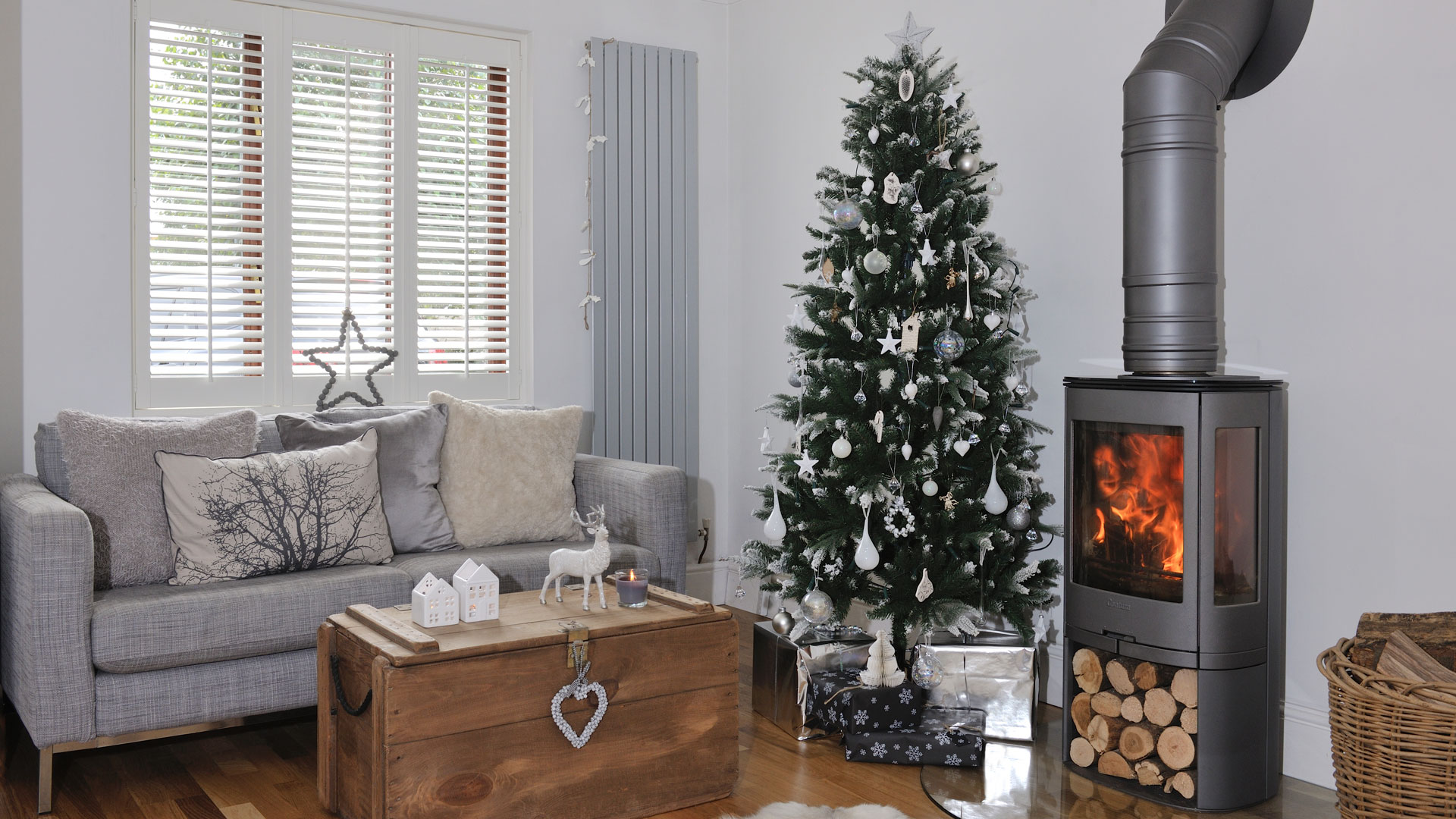
In order to create a cat-proof Christmas tree, begin by considering where you would like to position it – also key when looking at how to keep a Christmas alive for longer. Keep your Christmas tree away from any easy-access surfaces that a nimble cat can use as a springboard; against a bare wall that's positioned away from shelves, sofas, or windowsills, for example, could be ideal. This will help to ensure that your cat doesn't jump onto the tree from another space, thus keeping it and your best Christmas decorations safe.
Catrin George, Animal well-being Specialist at Animal Friends Pet insurance says: “Cats love pouncing, and this is nothing to worry about. But, a pouncing cat and Christmas tree combined can make for a terrible twosome as trees can be toxic to pets. Additionally, if delicate decorations smash in the fall, this can also cause concern for your cat as the glass is dangerous for their paws."
“To help prevent this from happening, we suggest placing your Christmas tree away from surrounding furniture," suggests Catrin, "this should make it harder for your cat to pounce at or on it.”
In general, you should also factor in sources of hot and cold, such as radiators and windows, which could potentially damage a real Christmas tree.
2. Ensure the Christmas tree is properly secured
Once you've got the location sorted, decide if your Christmas tree needs securing in place. "Always try and fix your tree to a solid structure like the wall or stair balustrade," advises Dr. Roberts. "Cats may be small, but energy built up from a jump can easily topple a tree and crush anything beneath it." Attaching it to something can also help to keep it upright.
Whatever style of tree you choose, it will need a solid base, such as a firm stand. This will mean that even if your cat manages to jump onto it, the tree is less likely to topple over.
3. Wrap a tree skirt around the base

Using a Christmas tree skirt will cover up your tree's water reservoir, limiting your cat's ability to lap up the potentially toxic water within. "The tree water is rich in pesticides and fertilizer – ingesting this stagnant water can poison your cats so keep it covered at all times," advises Doron.
From an aesthetic perspective, it will also add a decorative touch to an otherwise-dull tree stand.
Additionally, consider wrapping the base of your tree in aluminum foil to deter the interest of a curious cat. This is a tried-and-tested trick that should keep them at bay – cats hate the feeling of their nails sinking into foil, and as such will likely be deterred from scratching the tree.
4. Keep presents off the floor
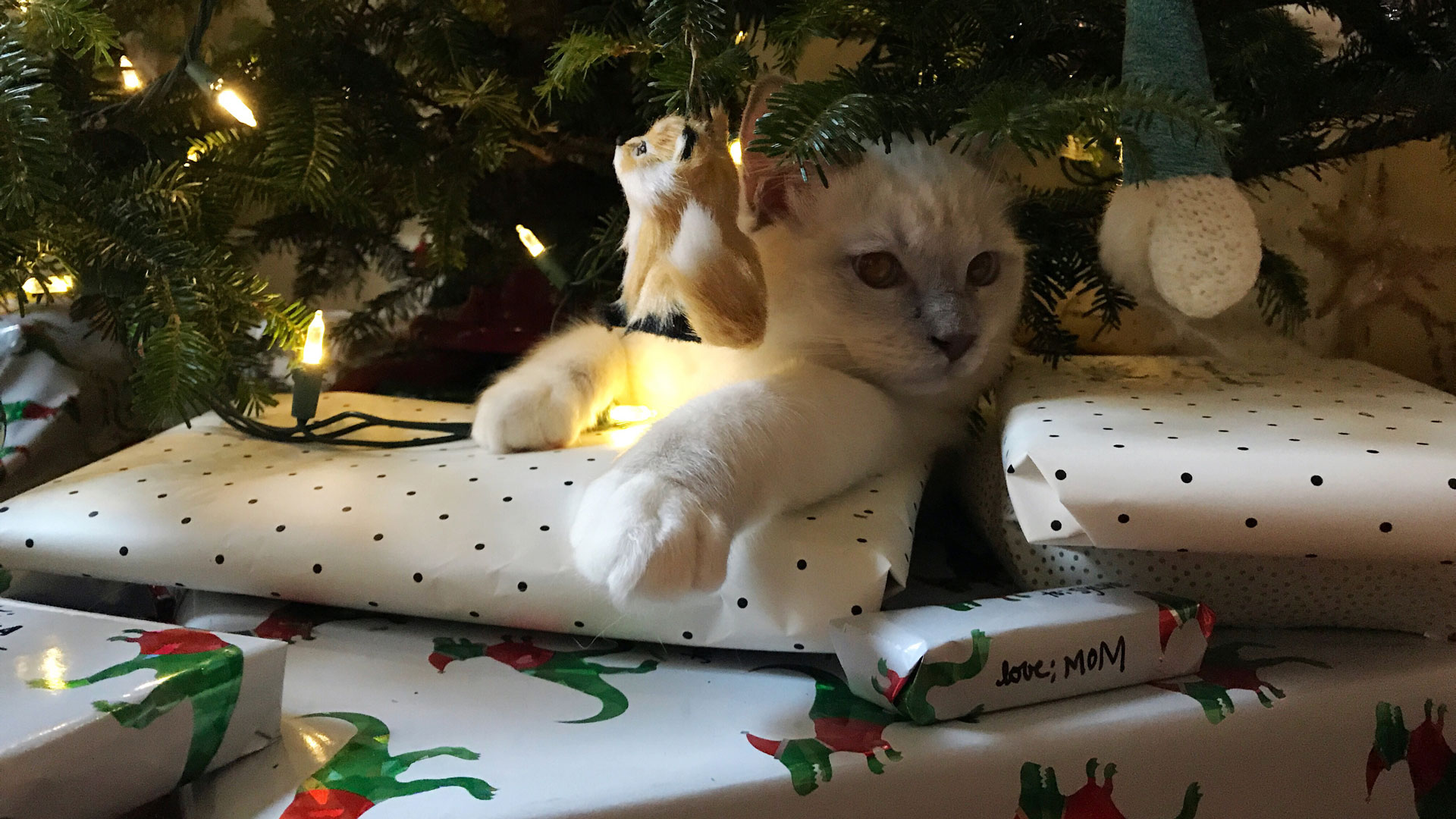
It's also worth giving thought to whether or not you should position presents around your Christmas tree.
"Keep any wrapped presents off of the floor so that your cat doesn’t start to see them as convenient scratching posts or teeth management devices," suggests Anita Kelsey, cat behaviorist and author of Let's Talk About Cats. "Be careful of wrapping gifts with shiny ribbon, too. Not only will the lovely bow end up mangled and soggy, but loose ribbons can be a threat to cats if they try to eat them."
5. Choose the right cat-proof Christmas decorations
The good news is that you can still make a statement with lights and baubles when making a cat-proof Christmas tree, you just need to be savvy about it.
Whilst you might usually decorate from top-to-toe, it's time to focus on the upper sections of your tree only, low-hanging Christmas decorations are a no-go. "Place decorations higher up the tree out of reach of your cat and secure them as tightly as possible," recommends Karly Smith, Animal Behaviourist at UK pet charity Blue Cross.
If you can, choose shatterproof decorations too delicate paws can be easily damaged by shards of broken plastic or glass. And it might also be time to ditch the tinsel. "I would stay far away from tinsel," warns Dr. Roberts. "For some reason, cats find it irresistible to chew on and swallow. However, cats' guts do not cope well with processing linear foreign objects – such as string, wool or tinsel – and these can lead to serious illness if ingested."
Christmas tree topper ideas are also generally safe for cats—just make sure they are as secured to the tree as possible so they don't fall.
6. Elevate tree branches
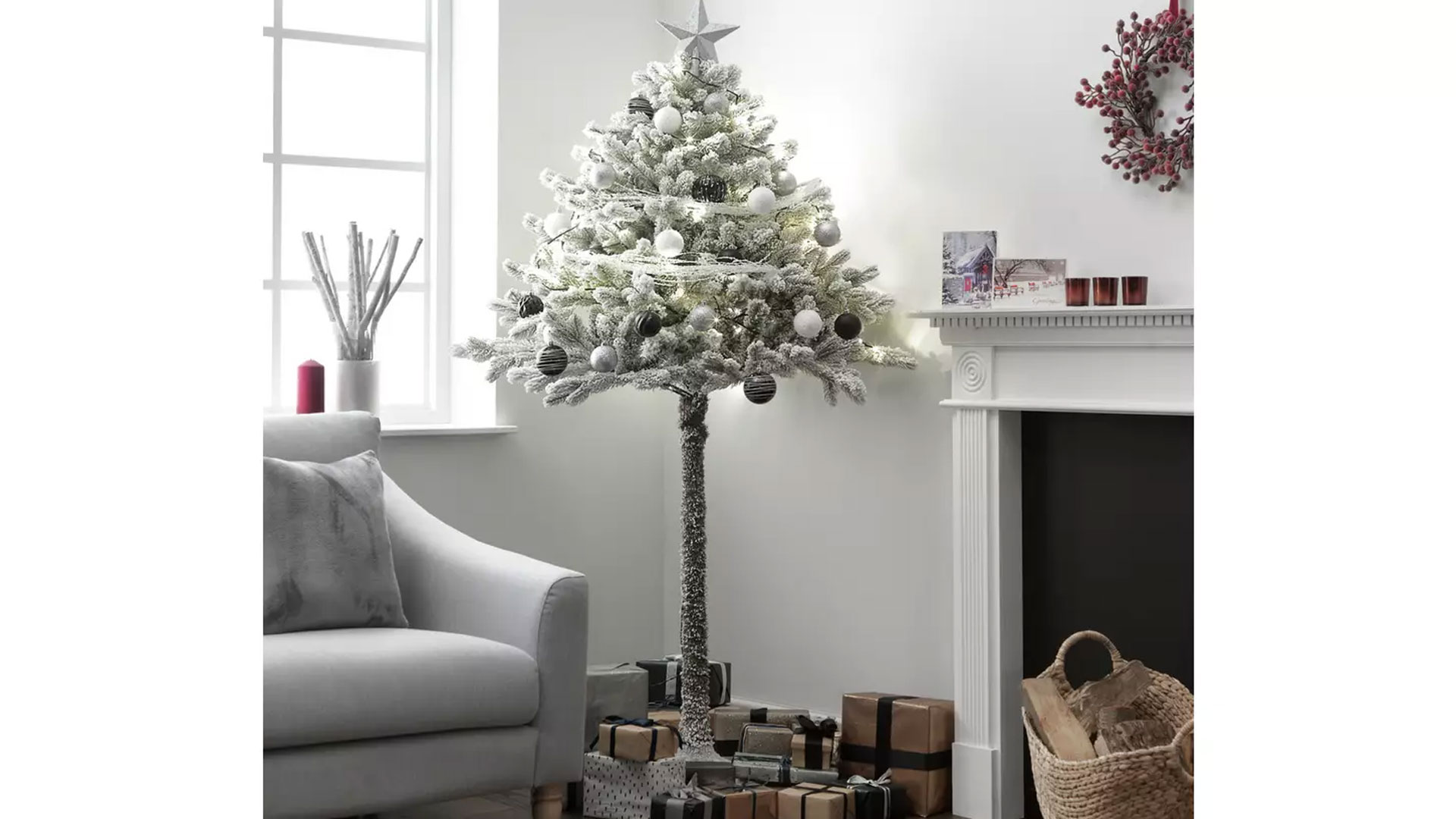
As suggested earlier on, you can avoid the temptation altogether by elevating your tree branches so they are out of easy reach. In addition to the real Christmas tree company that purposefully removes branches, you can also buy taller artificial Christmas trees that do the same job.
For example, this Habitat snowy 6ft half Christmas tree has been designed with curious cats in mind, with the first branches standing at 93cm to avoid the temptation to tamper. The higher branches offer a safer space to keep your perfectly placed baubles and twinkly lights out of reach of playful pets.
7. Avoid edible decorations
You may already be aware that chocolate can be fatal to our canine friends, but did you know it’s just as poisonous for cats, too? Chocolate contains a bitter-tasting alkaloid called theobromine which is toxic to our pets and their health can decline quickly after ingestion, so chocolate on the tree should always be avoided.
"If you know your pet is particularly excited when it comes to food, then giving the edible decorations on your tree a miss this year might be the safest option to prevent any upset tummies," says Sean McCormack, head vet at tails.com. "If you still want to treat your family and kids to edible gifts and snacks this year, avoid putting them on the tree and put them out of reach."
8. Be careful with Christmas lights
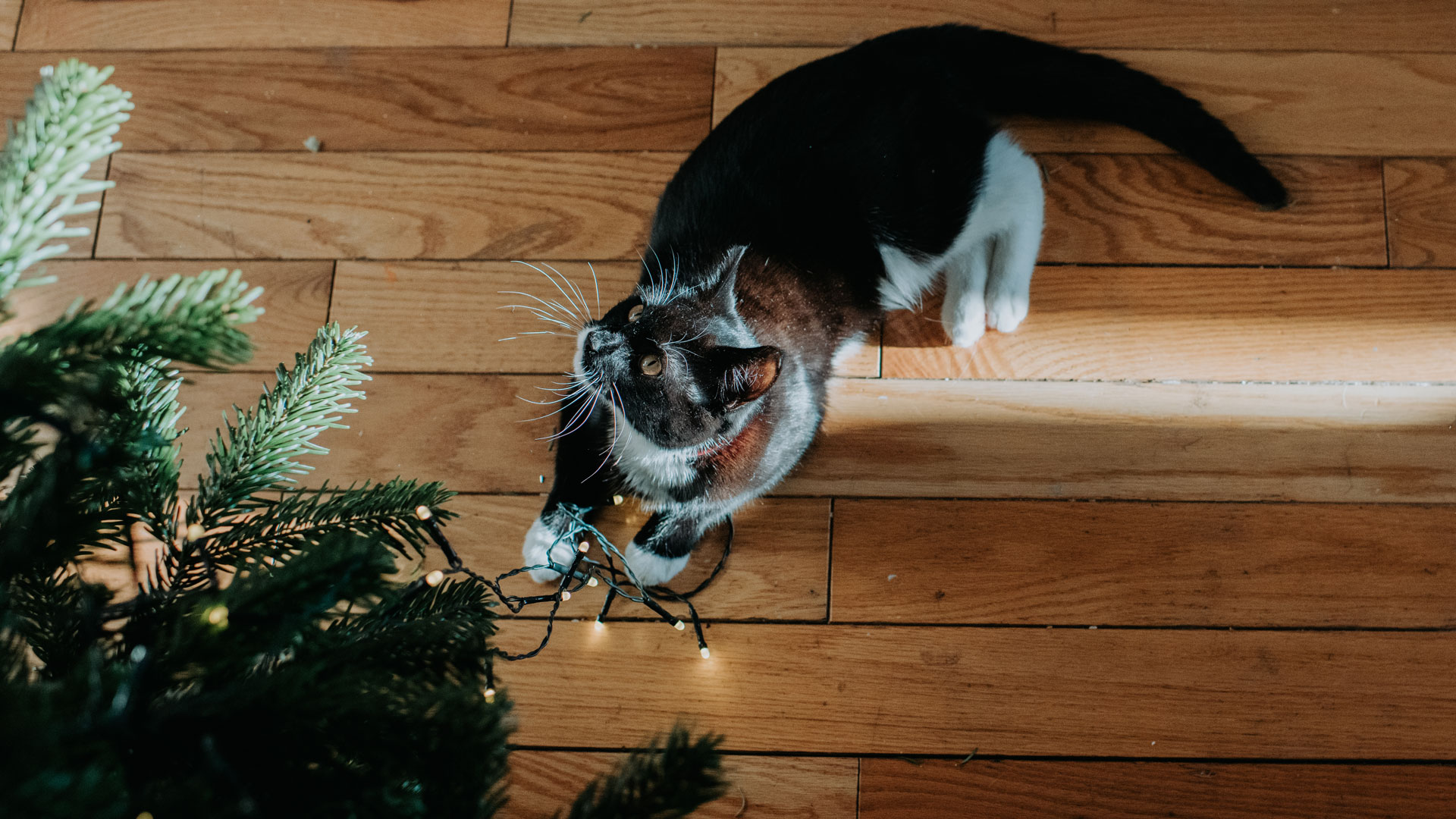
And for your Christmas tree lights, make sure to push them to the back of your tree, as close to the trunk as they can get, and as high up as you can. This will keep them as far out of your cat's reach as possible.
"Christmas lights can pose a danger to cats as they can chew on the electrical wiring," says Smith. "You can cover any exposed wires with cardboard or plastic tubes and always switch lights off when you’re not in the room with your cat. You can look to use battery-powered LED lights instead."
9. Create a distraction for your cat
If you've done all of the above and your cat is still persevering, there are a few other ideas to consider. "Never shout or reprimand your pet for doing something they shouldn’t be," advises Karly. "Try to distract your cat with a toy and reward them with a treat to get them away from the Christmas tree instead."
Setting up a new play area for your cat complete with toys and positioned far away from your Christmas tree could also work. while Kelsey suggests trying "a deterrent such as a motion detector spray, which will give a short burst of air when the cat gets too close".
And if all else fails, simply control your cat's access to the room. "If your cat is of a playful nature, then it can be a good idea to consider shutting them out of the room in which the Christmas tree is in altogether when you're not around," says Smith.
You could also opt for a Christmas tree alternative, which looks just as fabulous but can be much safer for cats to be around.
Katie Byrne is a contributor to woman&home and a writer whose interests span everything from homes and interiors, to pop-culture, travel, business and self-development. A former digital editor, her freelance journalism has featured across a wide range of print and online titles, including Raconteur, Digital Spy and more. When she's not writing, she loves reading (and has the groaning bookshelves to prove it...), dreaming up new décor ideas for her flat and devouring Netflix's latest true-crime series with her husband. You can find her on Twitter: @katie_b123.
- Tamara KellyLifestyle Editor